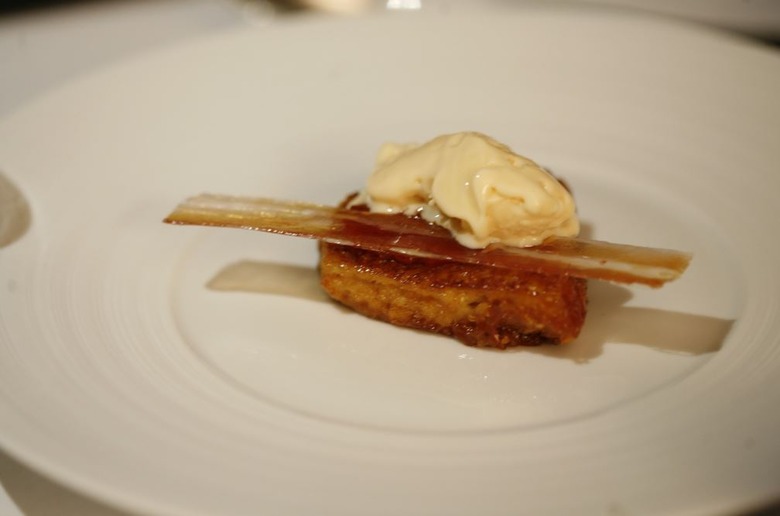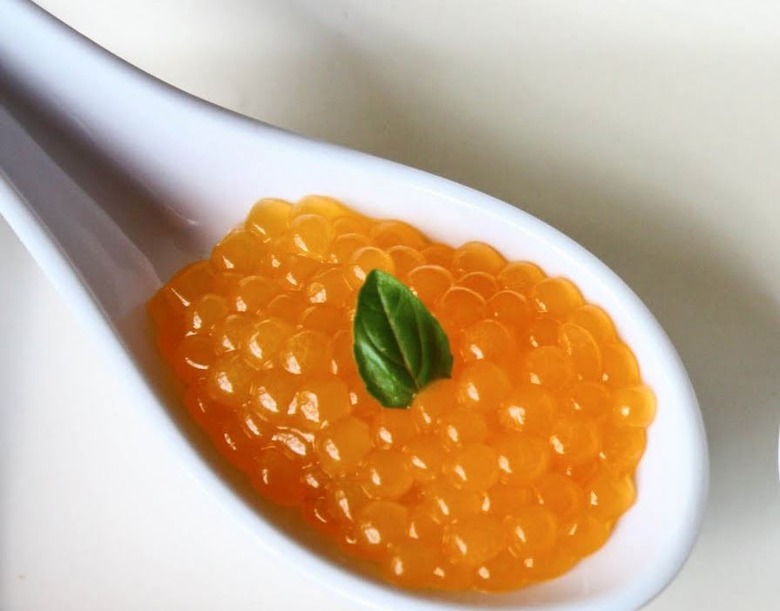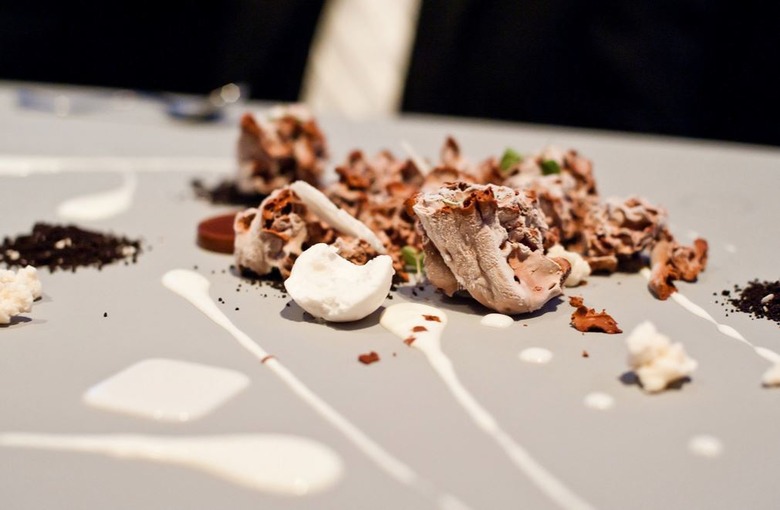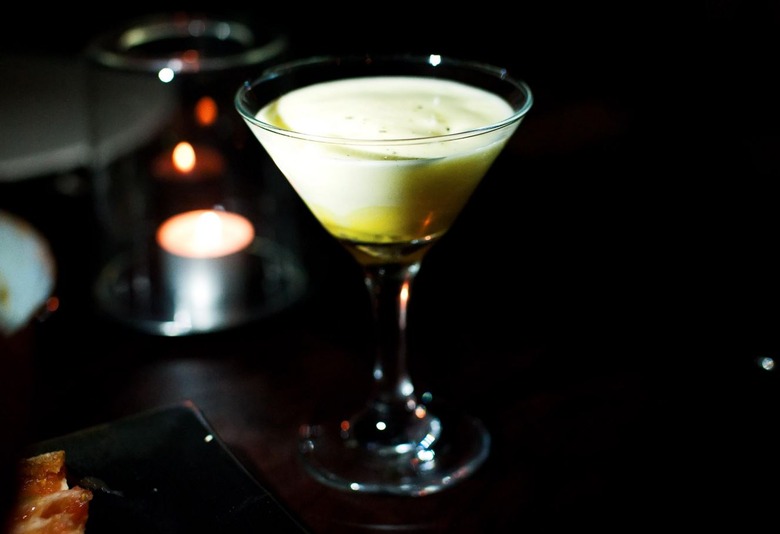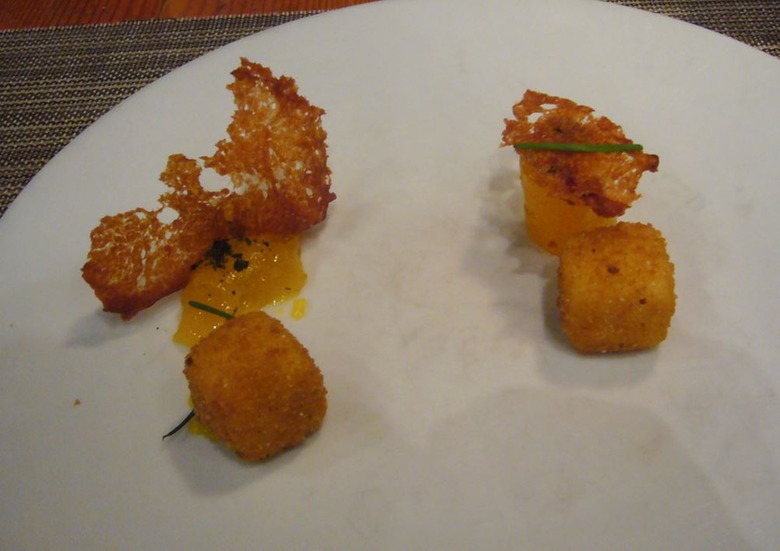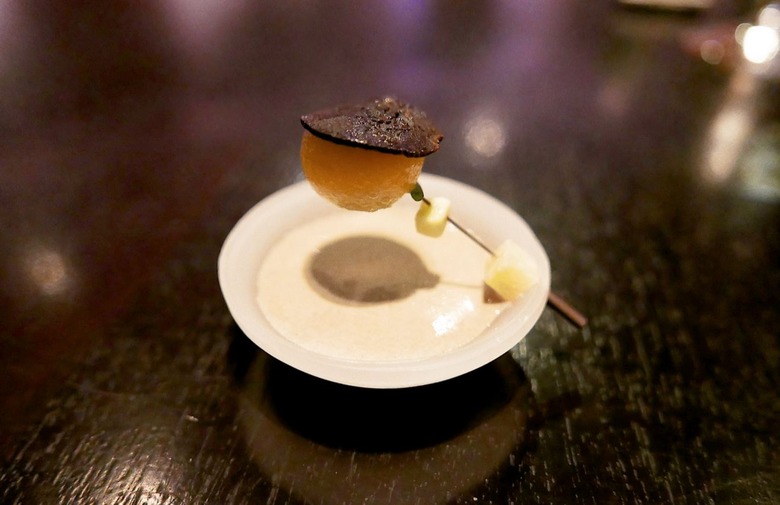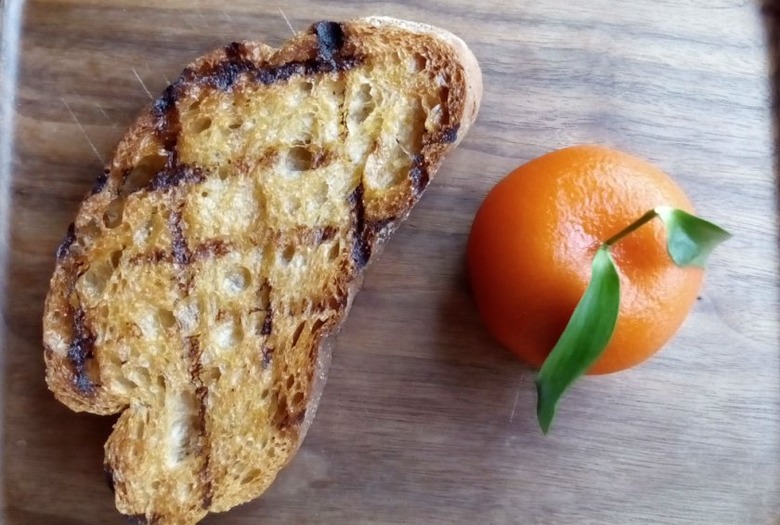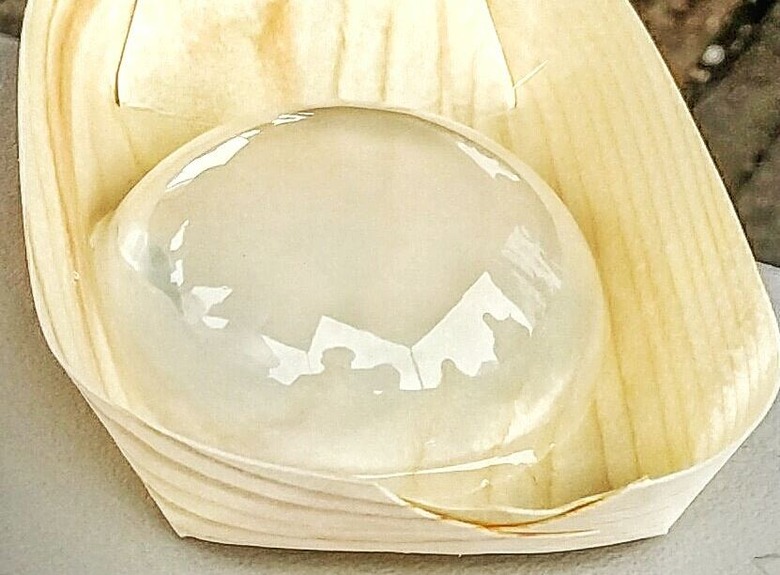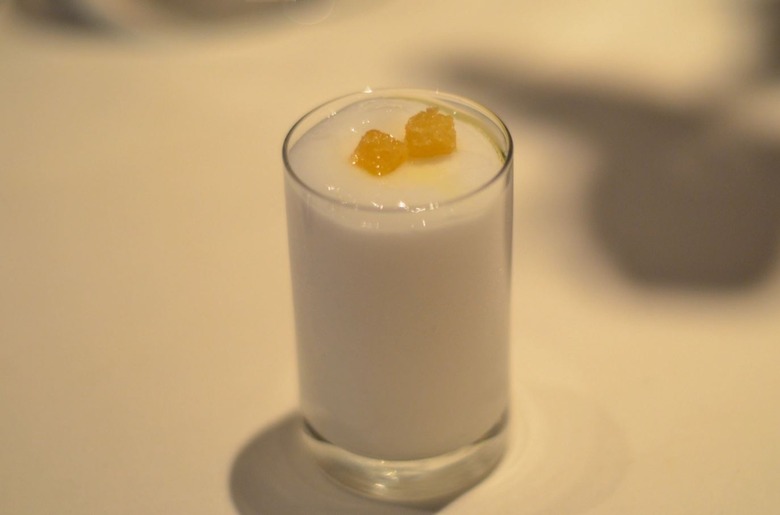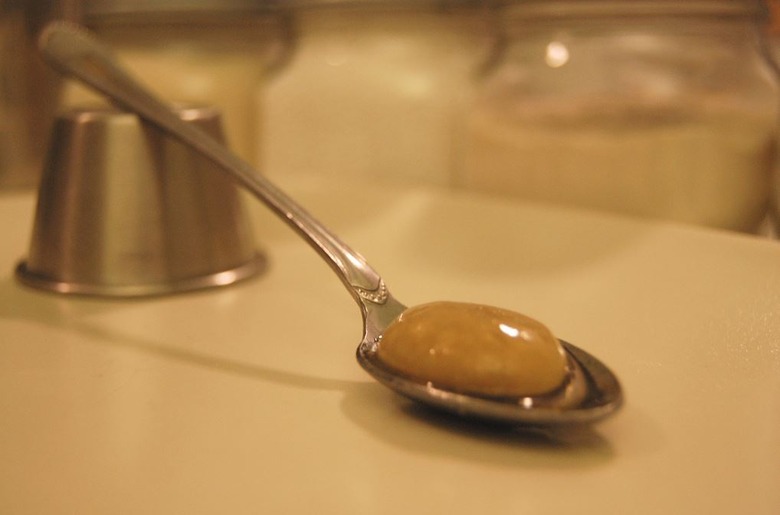Raindrop Cakes, Cantaloupe Caviar, And Other Insane 'Molecular Gastronomy' Creations You Won't Believe Exist
Call it molecular gastronomy, call it modernist cuisine, call it multi-sensory cooking, experimental cuisine, avant-garde cuisine, nueva cocina, or culinary physics. Call it whatever you like, really, but there's a school of cooking out there that uses science and chemistry to turn cuisine as we know it on its head, and chefs are making the most of it by devising some truly outrageous creations.
Bacon and Egg Ice Cream, The Fat Duck
This signature dish at Heston Blumenthal's Bray, Berkshire, restaurant The Fat Duck comprises five parts: ice cream, caramelized French toast, pancetta, tomato compote, and tea jelly. To make the ice cream, bacon is roasted and steeped in milk for 10 hours, and the eggs in the ice cream mixture are purposely overcooked, adding to the ice cream's bacon-and-eggs flavor. The dish has slightly evolved over the years; today the ice cream is "scrambled" in liquid nitrogen tableside to give the impression of cooking.
Cantaloupe Caviar, elBulli
At his sadly now-closed elBulli, trailblazing chef Ferran Adrià introduced "cantaloupe caviar" to the menu in 2003. To make the caviar-shaped cantaloupe pearls, Adrià combined cantaloupe juice with sodium alginate with an immersion blender, then dripped the mixture drop by drop into a "calcium bath" (made by combining water with calcium chloride) with a syringe. The calcium is rinsed off, and the "caviar" is served while the center is still liquid.
Chocolate Finale, Alinea
Grant Achatz's Chicago restaurant Alinea (which will soon be re-opening after a lengthy renovation) served one of the wackiest and most creative desserts you'll ever encounter, which was created on your table right before of your eyes. The chefs laid down a silicone cloth and plated upon it a dizzying array of edible wonders. It was described on the menu as simply as "Dark chocolate, chestnut, rye, birch syrup;" "Dark chocolate, coconut, menthol, hyssop;" or "Dark chocolate, butternut squash, lingonberry, stout," but from syrups to meringues to more chocolate preparations than you can count, this was a dessert that broke all the rules.
Deconstructed Spanish Omelette, elBulli
elBulli blazed a lot of new territory in the modernist field, and many of Adrià's dishes are legendary and iconic. His deconstructed Spanish omelette — a sherry glass with potato foam, onion purée, and egg-white sabayon topped with deep-fried potato crumbs — was one of the first dishes to introduce the world to deconstruction (reducing a dish down to only its elements while maintaining all of its flavor), and very well might be one of the most revolutionary dishes in history.
Eggs Benedict: wd~50
Wylie Dufresne's (now sadly closed) wd~50 introduced New Yorkers to the playful side of molecular gastronomy, and the most groundbreaking dish he served there was his play on eggs Benedict, which he introduced in 2005. By partnering cubes of English muffin-breaded fried hollandaise with streaks of seasoned egg yolk cooked to a fudgy consistency in an immersion circulator and crispy wisps of Canadian bacon, he completely reinvented a popular dish while maintaining all of its flavors, which is the height of the "deconstruction" school of molecular gastronomy.
Hot Potato Cold Potato, Alinea
Arguably the most famous dish at Alinea, Hot Potato Cold Potato toyed with the senses by pairing hot with cold, once again turning familiar flavors on their head. Hot potato-truffle soup was poured into a small custom-made paraffin bowl, which allowed a pin containing a cold truffle-topped ball of potato and cubes of Parmesan cheese and butter to hover over it, suspended on the pin. When the pin was removed, the cold potato dropped into the hot potato, creating a sensory experience that blew minds.
Meat Fruit, Dinner by Heston Blumenthal
When this legendary dish is brought to your table at chef Heston Blumenthal's renowned Dinner, it looks exactly like a small orange. In fact, the "skin" is the only part of the dish that's an actual orange; it's molded from puréed mandarin orange. Cut into it and you'll discover that the inside is actually creamy chicken liver pate.
Raindrop Cake, Chef Darren Wong
The hottest new dish on the molecular gastronomy scene was created by Brooklyn chef Darren Wong, inspired by a Japanese novelty food. And oddly enough, it's completely tasteless on its own. To make his "Raindrop Cake," which is sold at the borough's Smorgasburg food market, Wong simply mixes water and agar jelly and shapes it into a round blob. It has the texture of very soft jelly, and quickly melts into water as soon as you start chewing. Wong serves his with a side of roasted soy bean flour and brown sugar cane syrup, and he's selling up to 700 of them every weekend.
Smoke Mousse, elBulli
A dish comprised of woodsmoke-flavored foam and introduced in 1997, this elBulli hallmark has been called "the paradigm of innovation — pure provocation" by Adrià and "a Dalí-esque provocation" elsewhere. The recipe is simple: Water is smoked over burning wood, then turned into a foamy mousse. Nicknamed "Provocation of Fear" by Adrià, he admits that "There's a reason we don't eat smoke... It's very interesting, but I'm not sure it's very good. Nobody likes it."
Spherified Olive: elBulli
The adaptation and elaboration of the industrial food technique of spherification at elBulli in 2003 was a turning point in molecular gastronomy. By immersing a liquid combined with sodium alginate in a water bath containing calcium, a perfect sphere was formed that burst with flavor when eaten, and this spherification process is a staple of modernist menus today. By reversing the process (inserting a liquid that already contains calcium into an alginate bath) Adrià was able to solve the problem of working with products that already contained calcium (like olives), and the Spherified Olive was born. The sphere closely resembles an olive and tastes exactly high-quality olive oil, yet only contains liquid, so eating one of these is a paradigm-shifting experience for modernist newbies. While elBulli is no longer in operation as a restaurant, this dish is still available at all locations of Jaleo and Bazaar, run by Adrià's protégé, José Andrés (though Andrés doubles the fun by serving his versions alongside conventional Spanish olives).

